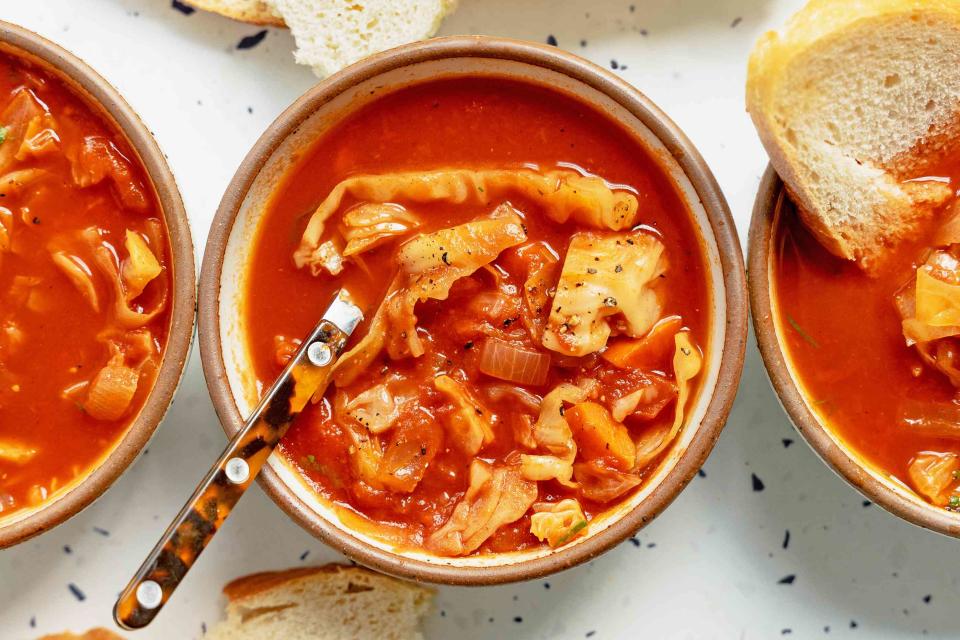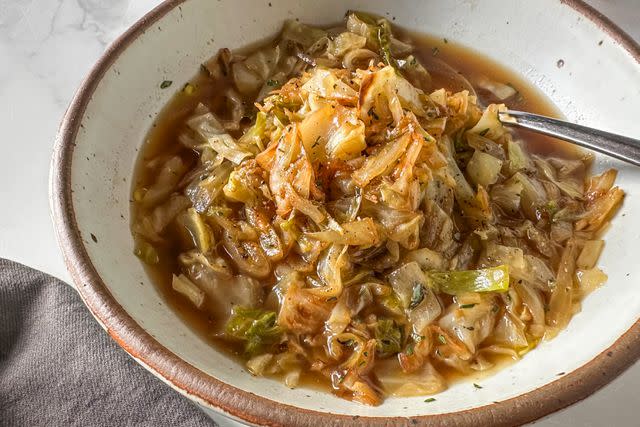The 1-Ingredient Upgrade for Better Cabbage Soup (Inspired by a French Classic)
It takes basic cabbage soup to the next level.

Simply Recipes / Micah Siva
A pot of cabbage soup simmering on the stove has long been a joyous winter tradition. My mom often made soup with a base of cabbage and canned tomatoes to use up the bits of vegetables in our fridge. And though I didn’t always appreciate the soup as a kid, soup and bread have become a classic comfort food in my home.
I often joke that a head of cabbage seems to grow in the crisper drawer rather than shrink and so I continue my mom’s tradition of using a bit of broth and a few pantry staples to make a rich cabbage soup.
Last winter after trying out a cabbage pasta recipe that caramelizes the crucifers to soften and brown them into silky, sweet strands, I started using this technique to make cabbage soup. This one step has forever changed how I make cabbage soup. Caramelizing the cabbage turns it from slightly sweet to richly sweet and toasty in flavor.

Simply Recipes / Meghan Splawn
How To Make Cabbage Soup With Caramelized Onions
You likely know caramelizing from French onion soup—cooking crunchy and sharp thinly sliced onions until they become sweet and supple. The steps for caramelizing cabbage are the same.
You’ll start by slicing the cabbage thinly to give it more surface area to caramelize and help it cook faster. (You can add thinly sliced onions to caramelize with your cabbage too!)
Heat a bit of olive oil and some butter in your largest pot. Add the cabbage and some salt, and cook it over medium-high heat until softened, stirring often. How long the cabbage takes to caramelize will depend on how much cabbage you’re using as well as how thinly you sliced it. It may take about 45 minutes with regular stirring.
Don’t fret if some of the cabbage gets browned, even burnished, but you will want to adjust the heat as needed so the cabbage can soften without burning. If you have some browning on the bottom of the pan, you can add a few tablespoons of water or broth to loosen and scrape those bits back into the cabbage.
You’ll want to stay in the kitchen, but this isn’t a complete hands-on task either. I usually meal prep while the cabbage is on the stove, like chopping other vegetables. The cabbage (and onions, if you added them) are finished when they are honey brown around the edges and are soft and sweet. A taste test will let you know when the cabbage is done.
How To Use This Trick With Any Cabbage Soup Recipe
You caramelized the onion. Now what? Proceed with your cabbage soup recipe! Let's say your making this classic cabbage soup recipe. After you caramelize the cabbage, add the spices, seasonings, tomatoes, and stock, and bring to a simmer. You won't need to simmer it for as long as the recipe says because the cabbage is already cooked.
Often, I make more caramelized cabbage than I need for one pot of soup. Then, I stash the extras in the freezer, which means next time, I'm one step closer to a pot of comforting cabbage soup. The caramelized cabbage can also lend heft and richness to everything from white bean stews to chicken chili and makes the best of winter's most everlasting vegetable.
Read the original article on Simply Recipes.

